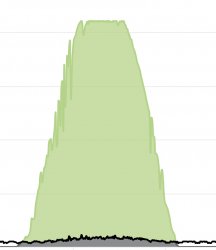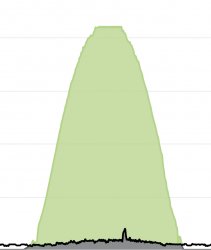Yes the hotter it is the lower the efficiency. Which is why overprovisioning the inverter with extra panels makes sense.
I reckon it’s about 5-10% from my reading.
Here is the solar curve for 6kw panels into 5kw inverter.
Notice that the plateau of the first one is slightly longer than the second one. The reason is the temps were hotter for the 2nd one = less efficient.
the plateau just means the inverter is working at the rated kW output. When this happens the inverter just adjusts the MPPT voltage so there is no excess input into the inverter.
I started getting the first “plateau” day in lateOctober.
overprovisioning means that the inverter is maxed out for more of the day than a precisely 1kw:1kw setup. This reduces the relative cost. It’s better to have more panels around. This setup is 1.2:1. the installer said I could have gone to 1.3:1, the only limitation is the DC input voltage which has a hard limit of 1000V.
A precise 1:1 setup in the best condition may only result in max inverter output for only a few minutes of the day. The rest of the time the inverter is operating at less than nameplate capacity
Post installation it’s always a good idea to see whether an installed system reaches the maximum that a inverter can handle.
If not it’s worth thinking about adding more panels - so long as they are exactly the same make and model panel.



















